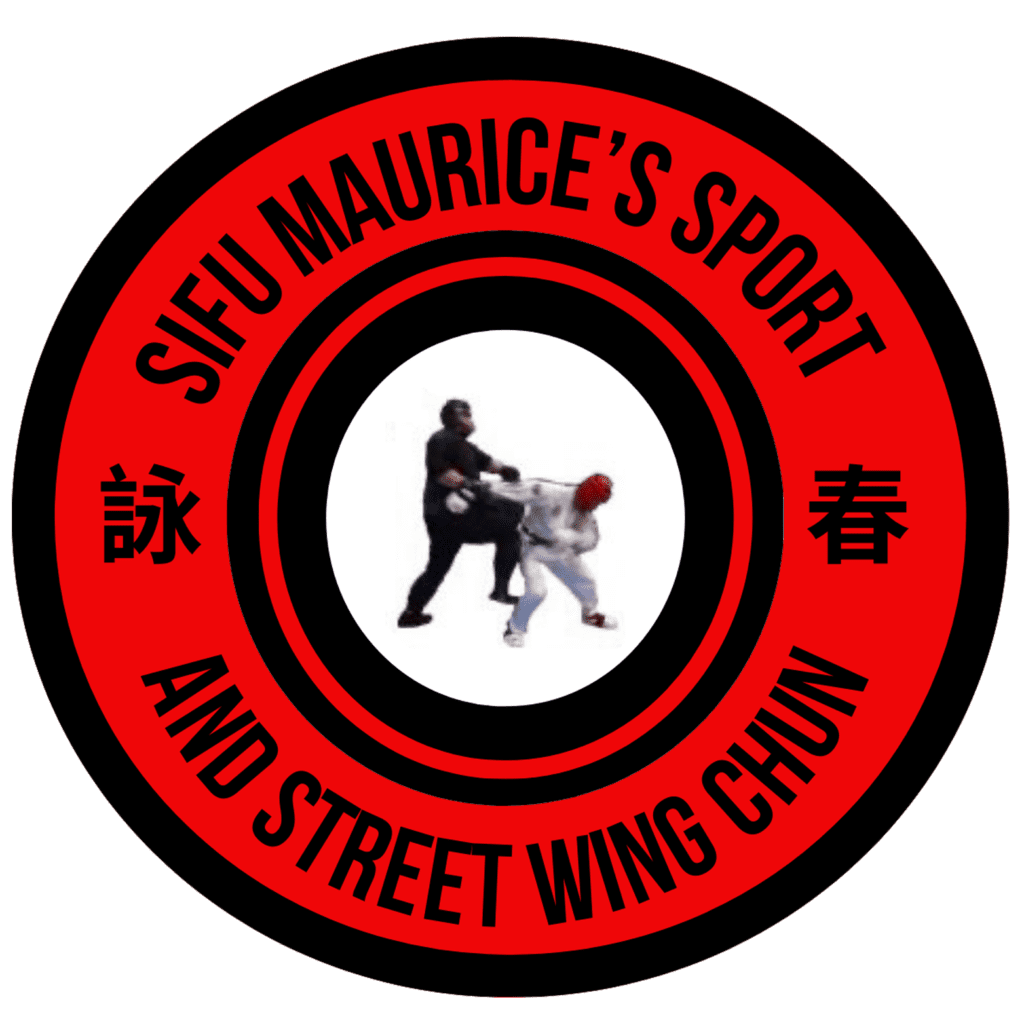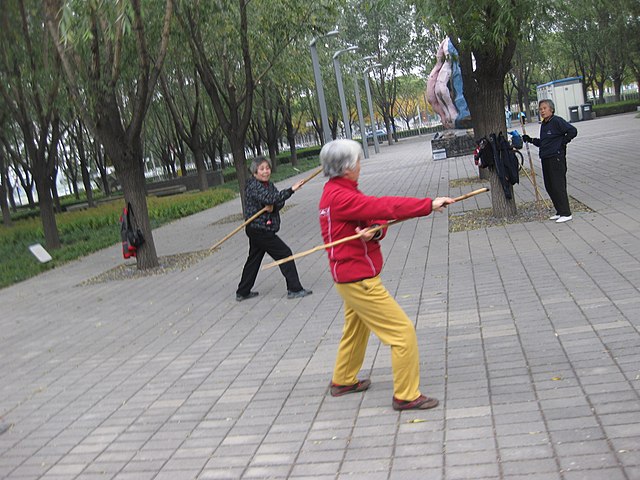Low-Impact Martial Arts Exercises for Older Adults
As we journey through life, the importance of staying active and prioritizing our well-being becomes increasingly clear. For older adults, maintaining physical fitness takes on a new significance, and the prospect of engaging in vigorous workouts may seem daunting. This is where low-impact martial arts exercises step in—a gentle yet effective way to promote overall health while embracing the art of movement.
The Essence of Low-Impact Martial Arts
Low-impact martial arts exercises encompass the fundamental principles of traditional fighting styles while adapting them to the unique needs of older adults. The emphasis here is not on high-intensity combat or extreme physical challenges. Instead, it’s about cultivating the benefits of martial arts in a way that is gentle on the joints, respectful of individual limitations, and supportive of a sustainable fitness routine.
1. Tai Chi: The Dance of Tranquility
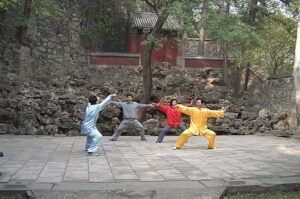
Harmony of Mind and Body
Tai Chi, often referred to as a “moving meditation,” is a graceful and serene martial art that is particularly well-suited for older adults. Its slow and flowing movements enhance balance, flexibility, and strength while promoting relaxation and stress reduction.
A Fluid Symphony
In the world of martial arts, Tai Chi stands out as a tranquil masterpiece. The deliberate, fluid movements of Tai Chi engage the entire body in a harmonious dance—a dance that fosters unity between the mind, body, and spirit. This practice is not about high kicks or powerful strikes; it’s a serene exploration of movement and mindfulness.
2. Qigong: Cultivating Vital Energy
Tapping into Life Force
Qigong, an ancient Chinese practice, focuses on cultivating and balancing the body’s vital energy or “qi.” Through gentle movements, deep breathing, and focused intention, Qigong promotes a sense of well-being, increased vitality, and improved circulation.
The Flow of Energy
In the heart of Qigong lies the concept of energy flow. Imagine a river of vitality coursing through the body—Qigong aims to keep this river unobstructed, allowing energy to flow freely and nurturing overall health. The exercises are deliberate and purposeful, emphasizing breath control and fluid movements that gently stretch and rejuvenate the body.
3. Seated Martial Arts: Embracing Comfort
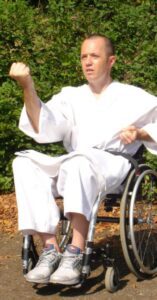
Adapting for Accessibility
For some older adults, standing exercises might pose a challenge. Seated martial arts exercises provide an accessible alternative, ensuring that everyone can participate and benefit from the art of movement. These exercises are performed while comfortably seated, making them suitable for individuals with limited mobility.
Empowerment through Adaptation
Seated martial arts exercises exemplify the spirit of adaptability—the heart of martial arts itself. These exercises allow older adults to experience the joy of movement, regardless of physical limitations. While the body remains seated, the spirit takes flight as participants engage in purposeful motions that promote flexibility, coordination, and a sense of accomplishment.
4. Wing Chun Chi Sao Exercise: Connecting Mind and Body
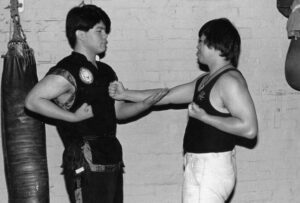
The Harmony of Flow
Wing Chun, a Chinese martial art, offers the Chi Sao exercise—a dynamic and controlled form of partner training. While Chi Sao is often practiced standing, its principles can be adapted for seated participants, creating a unique opportunity for older adults to enhance their coordination, sensitivity, and overall body awareness.
Uniting Mind and Senses
Chi Sao revolves around the interaction of touch, movement, and reaction. In this exercise, participants connect with a partner’s arms, maintaining constant contact as they exchange energy and respond to each other’s actions. Seated Chi Sao encourages participants to sharpen their focus, heighten their reflexes, and foster a profound connection between their minds and bodies.
Social Connection and Wellness
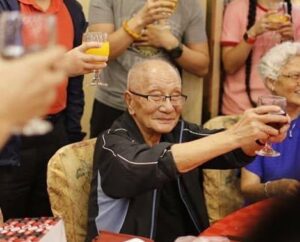
Uniting in Movement
Martial arts, in all its forms, has a remarkable ability to bring people together. For older adults, the social aspect of engaging in low-impact martial arts exercises is just as significant as the physical benefits.
A Tapestry of Togetherness
Participating in group activities fosters a sense of camaraderie and shared purpose. In low-impact martial arts classes, participants form a supportive community bound by a mutual commitment to health and wellness. This sense of togetherness contributes to emotional well-being, reducing feelings of isolation and promoting mental vitality.
Incorporating Low-Impact Martial Arts into Daily Life
Mindful Movement Beyond the Mat
Low-impact martial arts exercises need not be confined to the training session. The principles of balance, breath, and mindful movement can be woven into daily life, enhancing overall well-being.
A Lifelong Journey
Embracing low-impact martial arts is not a mere fitness trend—it’s a lifelong journey towards better health and vitality. By integrating the principles of these exercises into daily routines, older adults can experience a greater sense of physical comfort, mental clarity, and emotional contentment.
Conclusion
In the tapestry of life, every stage is unique, and the art of movement remains a vital thread. Low-impact martial arts exercises offer older adults a canvas upon which they can paint their own stories of well-being and resilience. It’s a canvas that emphasizes harmony over intensity, unity over competition, and connection over isolation.
Embracing Movement as a Lifestyle
The journey of incorporating low-impact martial arts into daily life extends far beyond the training mat. It’s about adopting movement as a lifestyle—a commitment to nurturing the body, mind, and spirit through purposeful actions. As older adults continue to practice the gentle techniques of Tai Chi, Qigong, and seated martial arts, they infuse their days with vitality, grace, and a renewed sense of purpose. It’s a testament to the power of consistency and the transformative potential of mindful movement.
Flourishing in Every Facet
The impact of low-impact martial arts exercises ripples through every facet of life. Physical health is uplifted as joints remain flexible, muscles gain strength, and balance becomes second nature. But it doesn’t stop there. Mental clarity and cognitive agility flourish as participants engage in movements that challenge the mind-body connection. Emotional well-being blossoms as the serenity of Tai Chi and the empowerment of martial arts foster a sense of accomplishment and peace.
Creating Lasting Connections
Perhaps one of the most beautiful outcomes of low-impact martial arts is the connections it fosters. Participants come together, united by a shared journey towards better health. In these classes, friendships are forged, support is exchanged, and the sense of belonging becomes a cornerstone of the experience. These connections extend beyond the training sessions, enriching social lives and reducing feelings of isolation that can sometimes accompany aging.
An Ongoing Odyssey
As older adults engage in low-impact martial arts exercises, they embark on an ongoing odyssey of self-care, self-discovery, and self-improvement. It’s an odyssey that defies age and embraces the boundless potential that resides within each individual. With every gentle movement, every intentional breath, and every moment of connection, they add vibrant strokes to the canvas of their lives.
In the end, low-impact martial arts exercises offer more than just physical benefits. They offer a path to holistic well-being that is both nurturing and invigorating. They offer an opportunity to explore movement as an art form, a philosophy, and a way of life. So, let’s continue to embrace this journey, celebrating the beauty of movement, the strength of connections, and the limitless potential of every step we take on this extraordinary path.
